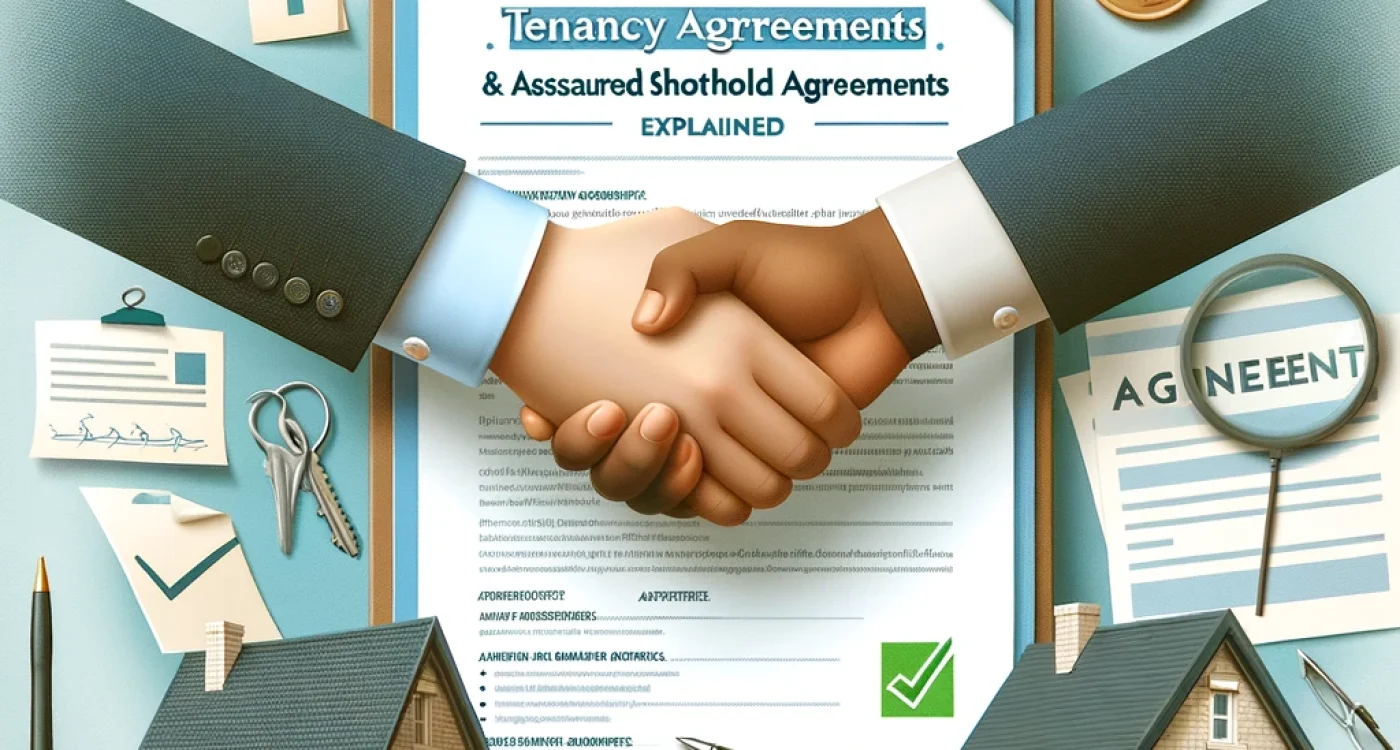Key Inclusions in a Room Rental Agreement Template
Rent Amount and Payment Terms
An Assured Shorthold Tenancy (AST) Agreement is a contract that outlines the terms of a residential tenancy, detailing the rights and responsibilities of both the landlord and the tenant.
Typically, an AST is a written agreement, although it can also be verbal, and it specifies key terms such as the start and end dates of the tenancy, the rent amount, and the obligations of both parties.
For instance, it outlines the tenant’s duty to maintain the property’s condition and the landlord’s responsibilities during the tenancy.
ASTs can be customized to suit various rental situations, whether for a fixed-term or a periodic tenancy, and are used for renting different types of properties like houses, flats, or rooms. In different regions, this agreement may be known as a short-term tenancy agreement, landlord tenancy agreement, or rental agreement.
Using an AST provides clarity, prevents disputes, and legally protects both landlords and tenants by ensuring that all parties understand and agree to the tenancy terms.
This agreement becomes legally binding once all parties have signed it. For changes or updates, a Lease Addendum can be used to amend the agreement without creating a new one.
Security Deposit Requirements
An AST typically lasts between 6 months and 3 years. There is no maximum length for an AST, but tenancies longer than 3 years must be created as a Deed. After the fixed term ends, if no new agreement is signed, the tenancy automatically becomes a periodic tenancy, which can be terminated with appropriate notice from either party.
Tenants are responsible for paying rent on time, maintaining the property’s condition, and adhering to the terms outlined in the tenancy agreement. This includes not causing damage, informing the landlord of necessary repairs, and respecting the property and neighbors.
Landlords must ensure the property is safe and habitable, conduct necessary repairs, and maintain the structure and exterior of the property. They must also ensure that gas, electricity, and water supplies are in good working order and comply with safety regulations.
A landlord can end an AST by serving a Section 21 notice to regain possession without providing a reason, but this can only be done after the fixed term ends or if there is a break clause. Alternatively, a Section 8 notice can be served if the tenant breaches the tenancy terms, such as non-payment of rent.
A tenant can terminate an AST early if there is a break clause in the agreement, or if the landlord agrees to end the tenancy early. Without a break clause, the tenant must negotiate an early termination with the landlord, potentially paying an early termination fee or finding a replacement tenant.
If a tenant stays in the property after the fixed term ends without signing a new agreement, the tenancy automatically becomes a statutory periodic tenancy. The tenancy continues on a rolling basis, with the same terms as the original AST, and can be ended by either party with appropriate notice.
A Section 21 notice is a legal document that a landlord can serve to regain possession of their property at the end of an AST. It requires the landlord to give at least two months’ notice and cannot be served during the first six months of the tenancy or if the tenancy is still within the fixed term without a break clause.
Rent can be reviewed during an AST according to the terms specified in the agreement. Typically, rent reviews occur at the end of the fixed term or annually for periodic tenancies. Any rent increase must comply with legal requirements and be fair and reasonable.
An AST should include the names and contact details of the landlord and tenant, property address, start and end dates of the tenancy, rent amount and payment terms, deposit details, and obligations of both parties. It should also specify terms related to repairs, maintenance, and any additional clauses relevant to the tenancy.
Landlord Responsibilities and Tenant Duties
Powered By EmbedPress
Rent Increase Provisions and Agreement Termination
1. Assured Shorthold Tenancy (AST)
Details:
The most common type of residential tenancy in the UK. Introduced by the Housing Act 1988, it provides landlords with the right to regain possession of their property at the end of the fixed term, provided they follow the correct legal procedures. ASTs usually have a fixed term of at least six months but can be longer. After the fixed term, the tenancy can become periodic, meaning it rolls on a week-by-week or month-by-month basis.
Source: GOV.UK (Gov UK)
2. Assured Tenancy
Details:
Tenants with a long-term tenancy have greater security than those with an AST. It allows tenants to stay in the property as long as they comply with the terms of the tenancy agreement. The landlord can only regain possession under certain conditions, such as rent arrears or other breaches of the tenancy agreement.
Source: Propertymark (PropertySector.org)

3. Periodic Tenancy
Details:
A periodic tenancy occurs when a tenant remains in the property after the fixed term of an AST has expired without signing a new fixed-term agreement. This type of tenancy can be either weekly or monthly, depending on how often the rent is paid.
Source: Shelter England (Shelter England)
4. Fixed-Term Tenancy
Details:
A tenancy of this kind has a specified start and end date, typically lasting six months to a year. The tenant agrees to stay in the property for the duration of the term, and the landlord cannot increase rent or terminate the tenancy without cause during this period.
Source: OpenRent (OpenRent) (OpenRent Landlord Hub)
5. Joint Tenancy
Details:
In a joint tenancy, all tenants sign a single tenancy agreement and are collectively responsible for the terms, including rent payment and property maintenance. If one tenant leaves, the others are still liable for the full rent.
Source: NRLA (NRLA – The Home For Landlords)
6. Individual Tenancy
Details:
This is common in house shares where tenants have separate agreements for their own rooms and shared access to communal areas. Each tenant is only responsible for their own rent and not the rent of other tenants.
Source: OpenRent Blog (OpenRent Landlord Hub) (OpenRent Landlord Hub)
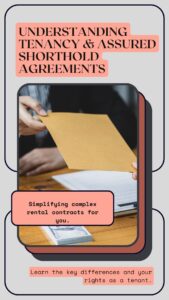
7. Subletting Agreement
Details:
Occurs when a tenant rents out part or all of their rented property to another person. The original tenant becomes a sub-landlord and the new tenant a sub-tenant. Subletting often requires the landlord’s permission.
Source: Shelter England (Shelter England)
8. Commercial Tenancy Agreement
Details:
Used for renting out commercial properties like shops or offices. These agreements differ significantly from residential tenancies and usually offer less protection to tenants.
Source: GOV.UK (Gov UK)
These tenancies cover a wide range of rental situations in the UK, ensuring that both landlords and tenants have clear and legally binding agreements tailored to their specific needs.
Understanding the Rent a Room Scheme and Lodger Agreements
Benefits of the Rent a Room Scheme
The process of creating your own customized tenancy agreement has never been easier. You can easily generate a tenancy agreement with Lendlord’s free tenants management tool.
Go to Manage->My Tenants and start customizing your tenancy agreement by editing the template. Once you have finished editing, click on the “Download and Save” button to get the tenancy agreement as a PDF file.

Differences Between Lodger and Tenant Agreements
Lendlord’s provided tenancy agreement template is an Assured Shorthold Tenancy (AST) agreement and includes the following key components and data requirements:
Premises:
The specific address of the rental property.
Parties Involved:
Names of the landlord and tenant(s).
Rent:
The monthly rent amount and the due date for payment.
Deposit:
The security deposit amount and conditions for its return at the end of the tenancy.
Term:
The start and end dates of the tenancy period.

Rent Review:
Conditions and formula for reviewing and potentially increasing the rent.
Utilities:
Responsibilities for payment of utilities such as gas, electricity, water, and council tax.
Condition and Repairs:
Responsibilities of both landlord and tenant regarding the maintenance and repairs of the property.
Use of Premises:
Permitted use of the property, typically residential purposes only.
Assignment and Subletting:
Conditions under which the tenant may assign or sublet the property, usually requiring landlord’s consent.
Notices:
Methods and requirements for delivering notices between landlord and tenant.
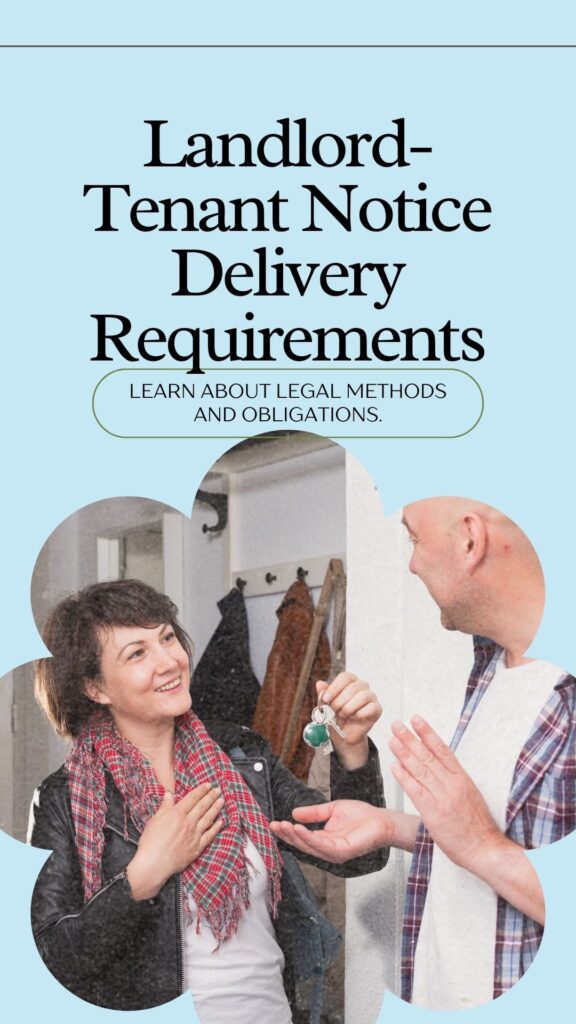
Governing Law:
Legal jurisdiction governing the tenancy agreement.
Entire Agreement:
A clause stating that this document constitutes the full agreement between the parties, superseding prior agreements.
Severability:
Provision that if part of the agreement is invalid, the rest remains in effect.
Waiver:
Conditions under which any part of the agreement may be waived.
Counterparts:
Allowance for the agreement to be signed in multiple copies, each considered an original.
These components ensure that both parties are clear on their rights and responsibilities, helping to prevent disputes and ensure smooth management of the tenancy.
Tax Implications for Resident Landlords
Source: Lendlord’s YouTube Channel
Situations Requiring a Lodger Agreement
1. Assured Shorthold Tenancy (AST) is the Standard
Explanation: The most common type of tenancy agreement in England is the Assured Shorthold Tenancy (AST).
This agreement typically provides the landlord with the right to regain possession of the property at the end of the fixed term, provided they follow the correct legal procedures.
ASTs usually last for six months to a year, but they can be for any period agreed upon by both parties.
2. Deposit Protection is Mandatory
Explanation: Landlords must protect tenants’ deposits in a government-approved deposit protection scheme.
This requirement ensures that the deposit is safeguarded and can only be used in accordance with the terms of the tenancy agreement.
The landlord must provide the tenant with information about how their deposit is protected within 30 days of receiving it.

3. Comprehensive Written Agreement
Explanation: A written tenancy agreement is crucial to outline the rights and responsibilities of both the landlord and the tenant.
This document should include details such as the rent amount, payment schedule, deposit information, duration of the tenancy, and any specific terms and conditions.
Having a clear and comprehensive written agreement helps prevent disputes and misunderstandings.
4. Legal Obligations for Repairs and Maintenance
Explanation: Landlords are legally required to maintain the property in a safe and habitable condition.
This includes ensuring the structure and exterior of the property are in good repair, as well as maintaining installations for the supply of water, gas, electricity, and sanitation.
Regular inspections and prompt attention to repair requests are essential to comply with these obligations.
5. Notice Periods for Ending Tenancies
Explanation: Landlords must provide the appropriate notice to tenants when seeking to regain possession of the property.
For an AST, a landlord typically uses a Section 21 notice to end the tenancy at the end of the fixed term or a Section 8 notice if the tenant has breached the tenancy terms.
The notice periods can vary, but generally, a Section 21 notice requires at least two months’ notice.
It’s crucial to follow the correct legal procedures to avoid potential legal challenges.

Understanding these key aspects helps landlords manage their properties effectively, comply with legal requirements, and maintain a good relationship with their tenants.
Legal Considerations: Rent, Deposits, and Tenant Responsibilities Renting Rooms, Rolling Contracts, Extensions, and Subletting
Setting and Adjusting Market Rent
Rent-to-rent agreements in the UK involve an intermediary, often a company or individual, leasing a property from the owner and then subletting it to tenants.
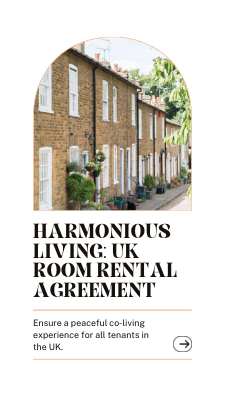
This arrangement can be beneficial for property owners who prefer a guaranteed rent without the hassle of managing tenants directly.
The intermediary, or rent-to-rent operator, takes on the responsibilities of maintaining the property, finding tenants, and handling day-to-day management, while the property owner receives a fixed monthly income.
However, rent-to-rent agreements require careful consideration of legal aspects, including ensuring the operator has permission to sublet and that the agreements with subtenants comply with local housing regulations.
It’s crucial for both property owners and intermediaries to conduct thorough due diligence and establish clear terms to avoid potential disputes and ensure a successful arrangement.
Deposit Protection and Compliance
Extending a tenancy agreement for ongoing residency in the UK is a common practice that provides stability for both tenants and landlords.
When the initial fixed-term tenancy period is nearing its end, both parties can agree to extend the agreement, ensuring the tenant can continue to reside in the property without interruption.
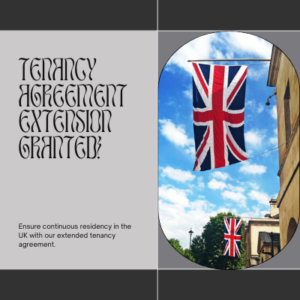
This extension can be formalized through a written addendum to the original contract or by signing a new tenancy agreement. Extending the tenancy often involves reviewing and potentially updating terms such as rent, maintenance responsibilities, and any changes in legal requirements.
For tenants, it offers the security of continued housing, while landlords benefit from retaining reliable tenants and avoiding the costs and uncertainties associated with finding new occupants.
Clear communication and mutual agreement are key to a smooth extension process, fostering a positive landlord-tenant relationship.
Tenant Duties Under the Homes (Fitness for Human Habitation) Act
A tenancy agreement break clause is an essential feature that offers flexibility for both tenants and landlords in the UK rental market.
This clause allows either party to terminate the tenancy before the fixed term ends, given proper notice is provided, typically outlined in the contract.
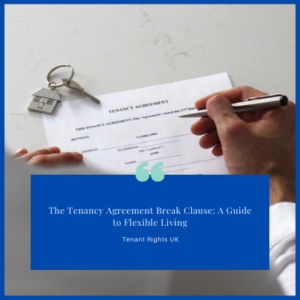
For tenants, a break clause provides an exit strategy if circumstances change, such as job relocation or personal reasons, without being tied to the full term of the lease.
For landlords, it offers the ability to regain possession of the property if needed, for example, if they decide to sell or move back into the property.
The specific terms of a break clause, including the notice period and any conditions that must be met, vary and should be clearly defined in the tenancy agreement to avoid disputes.
Understanding and negotiating the break clause can lead to a more adaptable and harmonious rental experience, accommodating the evolving needs of both parties.
Procedures for Ending a Room Rental Agreement
Crafting the perfect tenancy agreement renewal in the UK is essential for maintaining a stable and positive living arrangement for both tenants and landlords.
As the initial tenancy term approaches its end, a well-structured renewal process ensures continued satisfaction and compliance with legal requirements.
The renewal agreement should revisit and possibly revise key terms such as rent adjustments, maintenance responsibilities, and any updated legal obligations. This is also an opportunity to address any issues that arose during the previous term and to make mutually beneficial changes.
Clear communication between the tenant and landlord is vital to ensure both parties’ needs and expectations are met.
By carefully considering and negotiating the terms of the renewal, tenants can enjoy uninterrupted residency while landlords retain reliable occupants, fostering a sense of security and stability for all involved.
Frequently Asked Questions
- Landlord: The owner of the property.
- Intermediary: The company or individual renting from the landlord and subletting to tenants.
- Tenants: The end occupants of the property, who pay rent to the intermediary.
- Guaranteed Rent Agreement: The intermediary guarantees a fixed rental income to the landlord regardless of whether the property is occupied or not.
- Management Agreement: The intermediary manages the property on behalf of the landlord and takes a percentage of the rental income as a fee.
- Intermediary: Responsible for finding tenants, collecting rent, and managing the property, including maintenance and repairs.
- Landlord: May have limited involvement but retains ownership and ultimate responsibility for ensuring the property complies with legal standards.
- Tenants: Rent the property as if directly from the landlord but often sign agreements with the intermediary.
- Licensing: Properties may require specific licenses, such as House in Multiple Occupation (HMO) licenses if subletting to multiple tenants.
- Contracts: Clear contracts outlining responsibilities and terms are crucial to avoid disputes.
- Compliance: The property must comply with housing standards, health and safety regulations, and landlord obligations under the law.
- Landlords: Receive consistent rental income without managing the property.
- Intermediaries: Can profit from the difference between the rent paid to the landlord and the rent collected from tenants.
- Tenants: Often get well-maintained properties with responsive management.
- Landlords: Potential issues with property management and compliance if the intermediary fails to uphold standards.
- Intermediaries: Financial risk if they cannot sublet the property or cover the guaranteed rent.
- Tenants: Possible instability if the intermediary’s business fails or if there are disputes between the intermediary and the landlord.
- Due Diligence: Landlords should thoroughly vet intermediaries and ensure they have a good track record.
- Clear Agreements: Detailed contracts should clearly define roles, responsibilities, and expectations.
- Regular Checks: Landlords should periodically inspect the property to ensure it is being maintained and managed properly.
